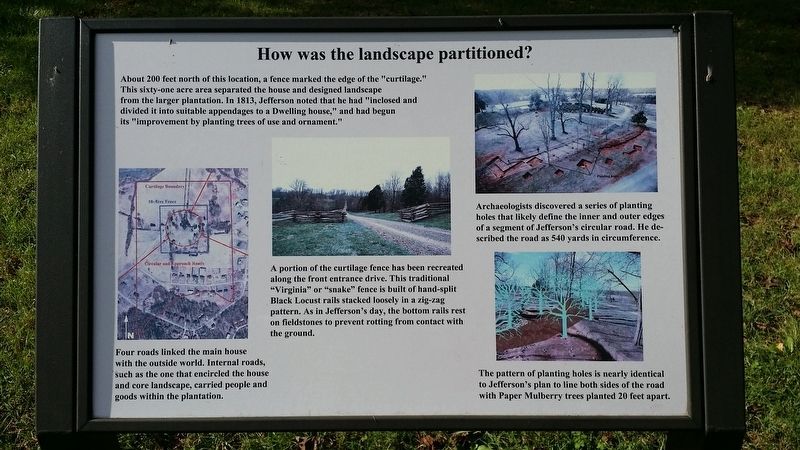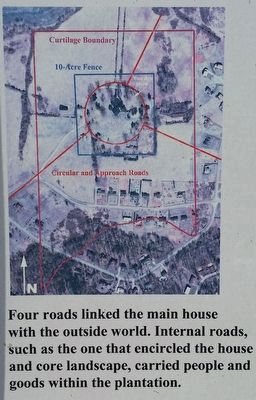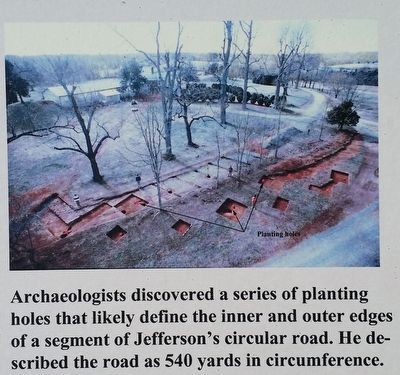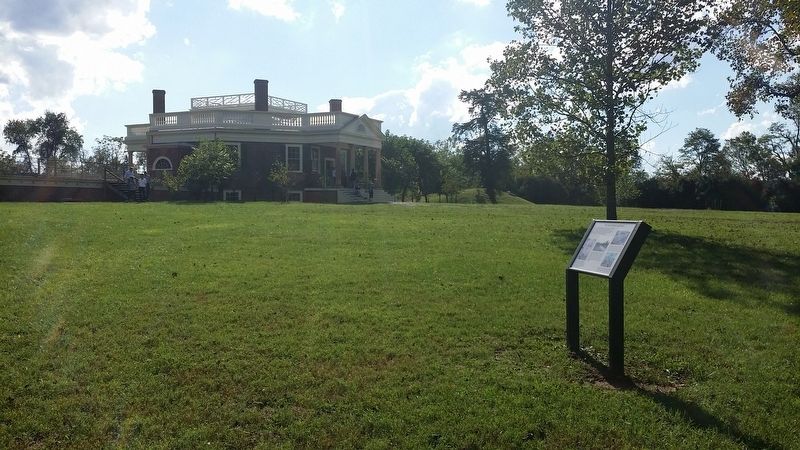Forest in Bedford County, Virginia — The American South (Mid-Atlantic)
How was the landscape partitioned?
(left image text)
Four roads linked the main house with the outside world. Internal roads, such as the one that encircled the house and core landscape, carried people and goods within the plantation.
(center image text)
A portion of the curtilage fence has been recreated along the front entrance drive. This traditional "Virginia" or "snake" fence is built of hand-split Black Locust rails stacked loosely in a zig-zag pattern. As in Jefferson's day, the bottom rails rest on fieldstones to prevent rotting from contact with the ground.
(right-top image text)
Archaeologists discovered a series of planting holes that likely define the inner and outer edges of a segment of Jefferson's circular road. He described the road as 540 yards in circumference.
(right-bottom image text)
The pattern of planting holes is nearly identical to Jefferson's plan to line both sides of the road with Paper Mulberry trees planted 20 feet apart.
Topics. This historical marker is listed in these topic lists: Architecture • Horticulture & Forestry • Man-Made Features • Patriots & Patriotism. A significant historical year for this entry is 1805.
Location. This marker has been replaced by another marker nearby. It was located near 37° 20.902′ N, 79° 15.843′ W. Marker was in Forest, Virginia, in Bedford County. Marker could be reached from Bateman Bridge Road. Located on the grounds of Thomas Jefferson's Poplar Forest. Touch for map. Marker was in this post office area: Forest VA 24551, United States of America. Touch for directions.
Other nearby markers. At least 8 other markers are within 3 miles of this location, measured as the crow flies. "A Culture Productive of Infinite Wretchedness” (here, next to this marker); Plantation Worker Housing (within shouting distance of this marker); Poplar Forest Planting Memorandum 1812 (within shouting distance of this marker); Transforming a Plantation into a Private Retreat, 1806—1826 (about 300 feet away, measured in a direct line); Mounds Made of Ideas and Sweat (about 400 feet away); “I have this summer built a wing of offices...” (about 400 feet away); Crafting a Masterpiece, Longing for Home (about 400 feet away); St. Stephen's Church (approx. 2.4 miles away). Touch for a list and map of all markers in Forest.
Related marker.
Click here for another marker that is related to this marker. New Marker At This Location titled "A Culture Productive of Infinite Wretchedness".
Credits. This page was last revised on May 19, 2022. It was originally submitted on November 19, 2016, by Michael C. Wilcox of Winston-Salem, North Carolina. This page has been viewed 325 times since then and 18 times this year. Photos: 1, 2, 3, 4. submitted on November 19, 2016, by Michael C. Wilcox of Winston-Salem, North Carolina.



